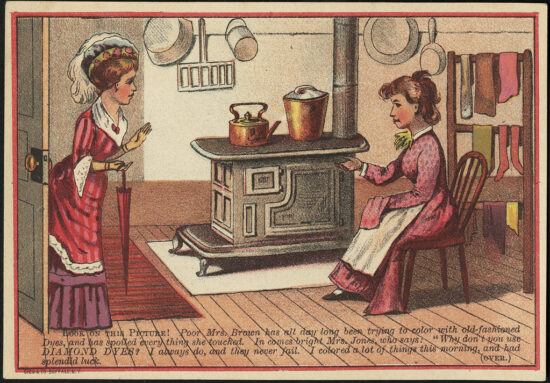Introduction
Elizabeth Gaskell’s novel “Wives and Daughters” is a captivating work of Victorian literature that explores the lives of women in 19th-century England. With its intricate plot, well-developed characters, and insightful exploration of themes, the novel continues to resonate with readers. This article provides a comprehensive analysis of “Wives and Daughters,” examining its plot, characters, themes, writing style, setting, historical context, and impact on literature.
Plot and Storyline
“Wives and Daughters” follows the life of Molly Gibson, the daughter of a country doctor. After her mother’s death, Molly’s father remarries, bringing a new stepmother, Hyacinth Kirkpatrick, into their lives. The novel explores the dynamics between Molly, her father, and her stepmother, as well as the societal expectations and challenges faced by women during this period.
The story unfolds as Molly’s life intertwines with the Hamleys, a neighboring family. She develops a close friendship with Cynthia, the beautiful and complex daughter of the Hamleys. The novel navigates through various significant events, including romantic entanglements, secrets, misunderstandings, and the complexities of family relationships.
Characters
The novel features a rich cast of characters, each with their own motivations and contributions to the overall narrative. Molly Gibson serves as the novel’s protagonist, embodying virtues such as resilience, kindness, and moral integrity. Her growth and self-discovery form a central theme of the novel.
Cynthia Kirkpatrick, Molly’s stepsister, is portrayed as a captivating and enigmatic character. Her beauty and charm often mask her inner struggles and conflicting desires. Through Cynthia’s character, Gaskell explores the limitations placed upon women by society and the consequences of societal expectations.
Other notable characters include Squire Hamley, Roger Hamley, Mrs. Hamley, and Mr. Gibson, each playing a significant role in the development of the plot and the exploration of themes such as class, love, and family.
Themes and Symbols
“Wives and Daughters” delves into various themes that resonate with readers even today. One prominent theme is the role of women in society, highlighting their limited agency and the challenges they face in pursuing personal fulfillment. Gaskell skillfully portrays the societal expectations placed on women and questions their impact on individual happiness.
The novel also explores the complexities of human relationships, particularly within families. The dynamics between parents and children, stepmothers and stepdaughters, and the complexities of sibling relationships are all examined. Gaskell depicts the intricacies of these relationships with nuance and realism, delving into themes of love, jealousy, and forgiveness.
Writing Style
Elizabeth Gaskell’s writing style in “Wives and Daughters” is characterized by its elegance, depth, and attention to detail. She employs vivid descriptions, evocative language, and a keen understanding of human psychology. Gaskell’s use of dialogue allows for engaging and realistic character interactions, further enhancing the reader’s immersion in the story.
One notable aspect of Gaskell’s writing style is her skillful characterization. Through subtle gestures, internal monologues, and nuanced dialogue, she brings her characters to life, making them relatable and multidimensional.
Setting and Atmosphere
The novel is set in the idyllic English countryside during the early 19th century. Gaskell’s vivid descriptions of the landscape and the social milieu of the time create a rich and immersive setting. The rural setting serves as a backdrop for the characters’ lives, influencing their actions, aspirations, and relationships.
The atmosphere of “Wives and Daughters” is characterized by a mix of charm and melancholy. Gaskell captures the beauty of the English countryside while also exploring the constraints and challenges faced by individuals within this society. The atmosphere contributes to the overall tone of the novel, alternating between moments of warmth, humor, and reflection.
Historical, Social, or Political Context
“Wives and Daughters” reflects the historical, social, and political context of Victorian England. Gaskell addresses the societal norms and expectations placed upon women during this era, providing critical commentary on gender roles and the limitations they imposed.
The novel also touches upon socioeconomic divisions and the impact of class on individuals’ lives. Gaskell highlights the disparities between the landed gentry and the working class, shedding light on the rigid social hierarchies and their consequences.
Impact and Reception
Since its publication, “Wives and Daughters” has garnered significant acclaim and has become a classic of Victorian literature. Gaskell’s insightful exploration of women’s roles, complex characters, and engaging storytelling have earned the novel a place of distinction among readers and critics alike.
The novel’s cultural significance lies in its nuanced portrayal of female characters and its critique of societal norms. It has influenced subsequent works of literature, inspiring authors to delve into similar themes and explore the complexities of women’s lives.
How does the character of Molly Gibson evolve throughout the novel, and what challenges does she face in her journey of self-discovery?
Throughout the novel “Wives and Daughters,” the character of Molly Gibson undergoes a significant evolution as she navigates her journey of self-discovery. Initially portrayed as a young and innocent girl, Molly matures into a resilient and independent young woman by the end of the story.
At the beginning of the novel, Molly is content with her life and her close relationship with her father. However, her world is disrupted when her father remarries, introducing a new stepmother, Hyacinth Kirkpatrick, into their lives. Molly’s challenges begin with adjusting to this new family dynamic and the complexities of her relationship with her stepmother.
As Molly grows older, she becomes increasingly aware of the societal expectations placed upon women during this time. She grapples with the limitations imposed on her and yearns for personal fulfillment and autonomy. Molly’s journey of self-discovery involves questioning these expectations and finding her own path in life.
One of the major challenges Molly faces is her attraction to Roger Hamley, the son of the neighboring family. Their relationship encounters obstacles, including misunderstandings and external influences. Molly’s journey involves navigating the complexities of love and relationships, learning valuable lessons along the way.
Another significant challenge in Molly’s life is her friendship with Cynthia Kirkpatrick, her stepsister. Cynthia’s beauty and charm often overshadow Molly, leading to feelings of jealousy and self-doubt. Molly’s growth involves overcoming these insecurities and forging a deeper understanding of herself and her place in the world.
Throughout the novel, Molly exhibits strength and resilience in the face of adversity. She demonstrates integrity, kindness, and a strong moral compass. The ability of Molly to face challenges head-on, make difficult decisions, and ultimately find her own voice and identity, marks her evolution.
Overall, Molly Gibson’s journey of self-discovery in “Wives and Daughters” is characterized by personal growth, the exploration of societal expectations, and the pursuit of independence. Her transformation from a young girl to a confident woman showcases her resilience, determination, and the triumph of her individual spirit.
How does the setting of the English countryside in the 19th century contribute to the tone and atmosphere of the novel?
The 19th-century English countryside setting in “Wives and Daughters” establishes a serene and idyllic tone while contrasting with the characters’ inner conflicts. Descriptions of events like the Hollingford Agricultural Show capture the vibrant energy of the rural community. The changing seasons symbolize personal growth, and the isolation of rural life mirrors the characters’ struggles. The setting also reflects the social hierarchies and societal expectations of the time, adding tension and highlighting inequalities. Overall, the setting contributes to the atmosphere by immersing readers in the time, place, and emotional journeys of the characters.
Final Conclusions
Elizabeth Gaskell’s “Wives and Daughters” is a masterfully crafted novel that offers a profound exploration of women’s roles, family dynamics, and societal expectations in Victorian England. Through its well-developed characters, rich themes, and elegant writing style, the novel continues to captivate readers, inviting them to reflect on timeless issues and appreciate the complexities of human relationships. With its enduring legacy and cultural significance, “Wives and Daughters” stands as a remarkable contribution to literature, showcasing Elizabeth Gaskell’s talent for storytelling and her insightful commentary on the human condition.
Sources
Wives and Daughters – Wikipedia
Wives and Daughters | Victorian England, Social Criticism, Realism | Britannica
Wives and Daughters by Elizabeth Gaskell: 9780140434781 | PenguinRandomHouse.com: Books






